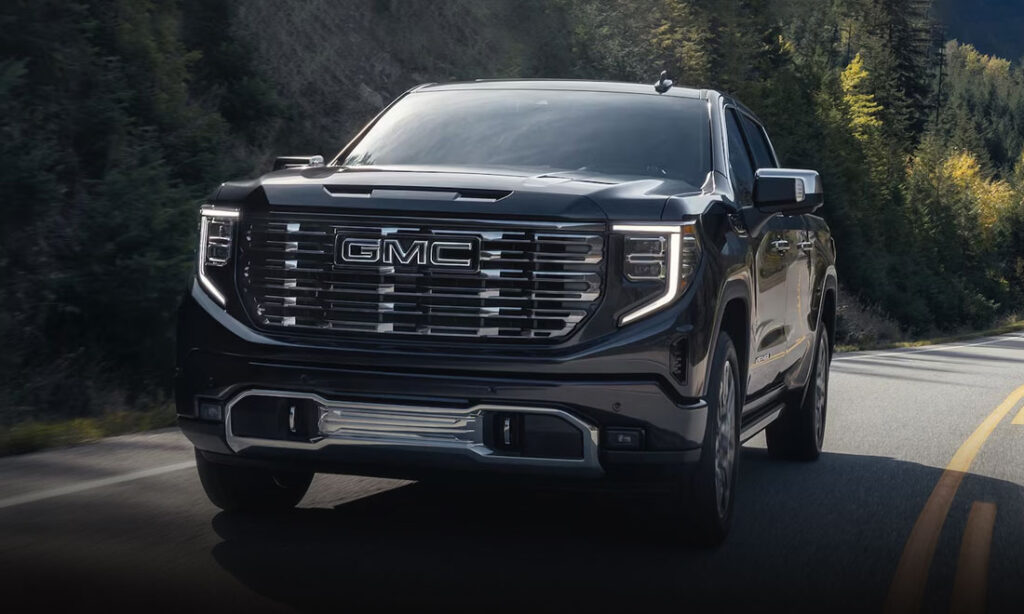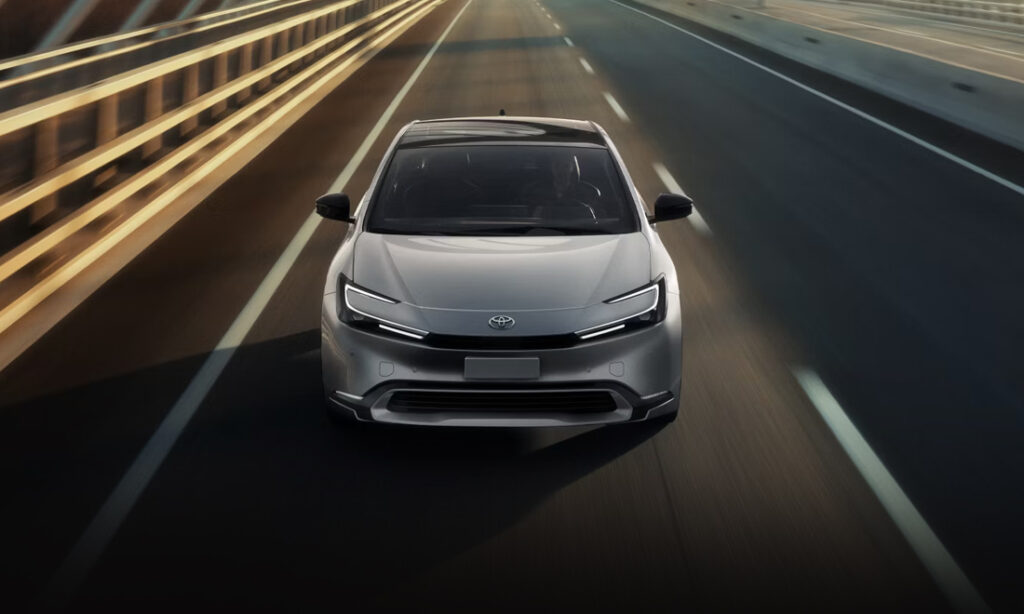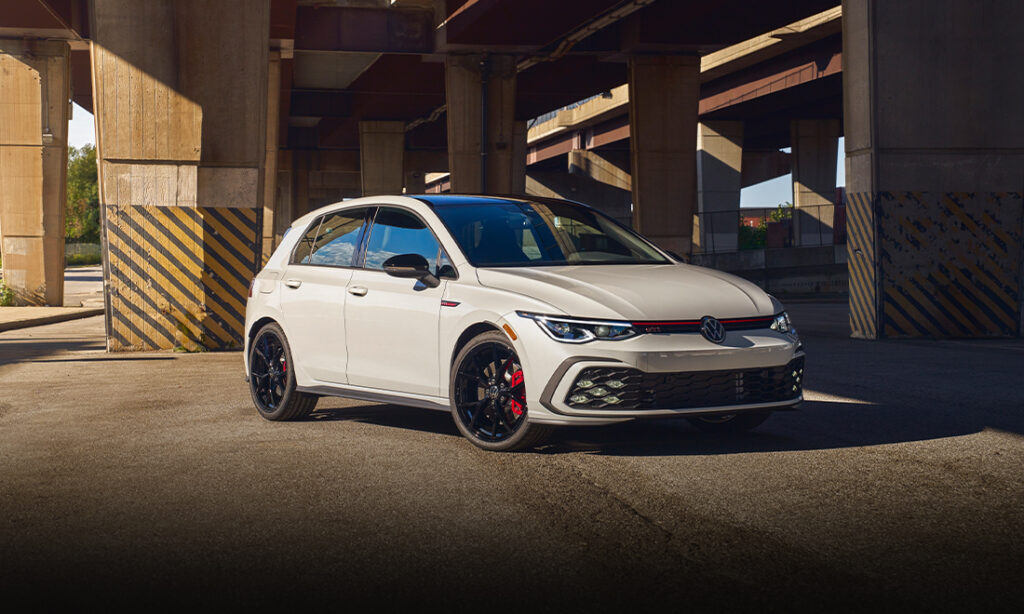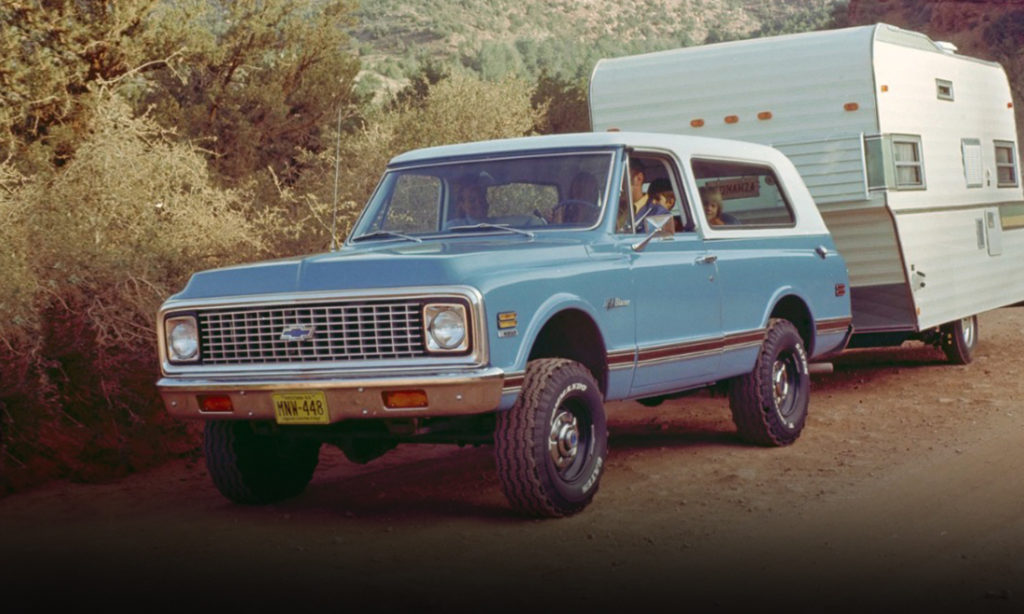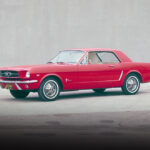Dodge Challenger Generations
It may be the Last Call for this muscle car, but we’re still fondly remembering all the Dodge Challenger generations.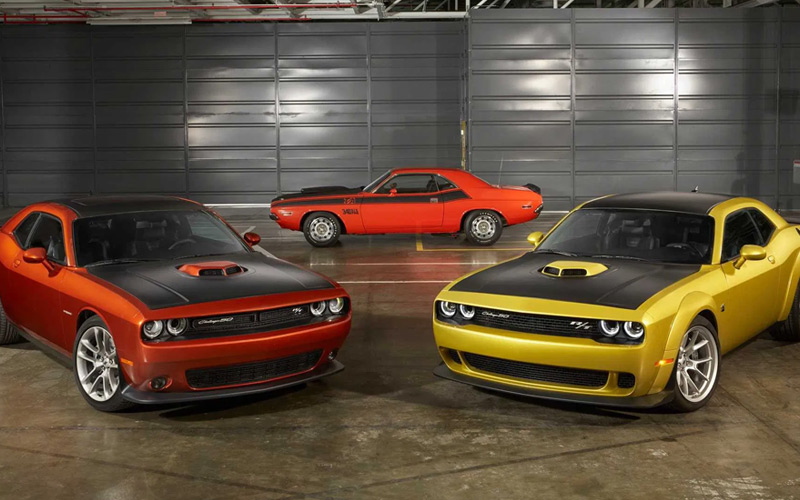
Classic Mopar, Mitsubishi, and Modern Muscle
From the original E-body to the Japanese badge swap to the 797-horsepower SRT Hellcat Redeye, we’re looking back at how the Dodge Challenger has changed over the years. For being such a significant muscle car, the Dodge Challenger only has three disjointed generations since first debuting in 1969. We’ve identified all the changes, editions, engines, and so much more throughout this nameplate’s storied history – just in time to commemorate its “Last Call” and the model that’s currently replacing it.
First Generation Dodge Challenger (1970 – 1974)
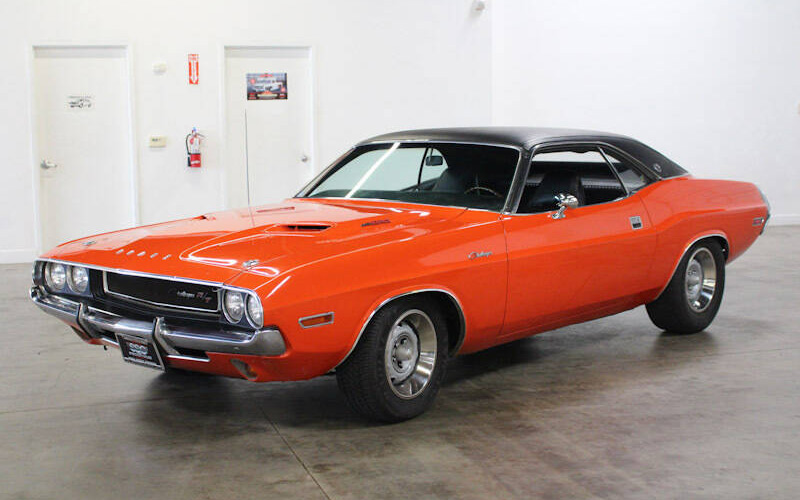
- The 1970 Dodge Challenger debuted in fall of 1969 as the company’s Pony Car entrant.
- The new muscle car shared Chrysler’s recently updated E-body platform with the Plymouth Barracuda. Chrysler revised the E-body by combining components from their A-body and the B-body platforms starting in 1969.
- The general design of both vehicles featured a long hood, a short deck, and were only available as either a 2-door hardtop or convertible soft top.
- While the Barracuda and Challenger rode on the same platform, they were very different. The sheet metal was unique to each vehicle and the Challenger measured 4.6 inches longer and 2 inches wider than the Barracuda. It also was outfitted to be more upscale than the Plymouth model.
- The model also featured a 110-inch wheelbase which was 2 inches longer than the Plymouth.
- The 1970 Dodge Challenger featured two sets of front headlights with a single grille insert spanning between them. A full-length rear taillight unit was used at the rear.
- Some new features that debuted on this Dodge included an energy absorbing steering column, antitheft steering column lock, hidden windshield wipers, flush door handles, and the first instance of injection molded door panels in the auto industry.
- Chrysler’s TorqueFlite automatic was available featuring a unique SlapStik shifter that allowed the driver to shift themselves if they wanted. Other transmission options were either a 3-speed or 4-speed manual.
- Challengers were available in two versions identified by the code JH or JS.
- The JH models started with a 225 CID slant-6 while higher trimmed models got a 318 CID V8 with a 2-barrel carburetor. A 340 CID V8 was optional.
- JS models were known as R/T, which stood for Road and Track. This was the performance-oriented version of the Challenger. It came standard with a 383 CID Magnum V8 but optional engine included a 440 CID Magnum V8 with a four-barrel carb, 440 CID Magnum Six Pack V8 that utilized three two-barrel carbs, or the exceptional 426 CID Hemi V8 that pumped out 425 hp.
- A special model only made for 1970 was the Challenger T/A. This was made specifically to qualify and compete in the Trans Am race series. These carried a unique 340 CID Six Pack V8 that produced 290 horsepower, standard front disc brakes, and a rally suspension that utilized heavy springs.
- T/A models featured a unique identifying stripe, specially made dual exhaust that exited in front of the rear tires, front and rear spoilers, and a matte black fiberglass hood with a unique snorkel scoop. They also could be optioned with a Hurst pistol grip shifter on the 4-speed manual transmission.
- Dodge offered the Challenger in a number of different High Impact color options such as Plum Crazy, Bright Green, and Hemi Orange.
- Other exciting options included a rear deck spoiler, Shaker hood, dual scooped hood, and more.
- The Special Edition was a mid-year option that could be tacked on to add luxury appointments. It came with a vinyl roof, SE pillar badging, leather and vinyl bucket seating, an overhead console that displayed warning lights, and a smaller rear window. It was only available for the 1970 model year.
- Over 83,000 Dodge Challengers were sold in its inaugural year.
- The model was featured in the 1971 movie Vanishing Point.
- 1971 introduced a revised design that utilized a pair of grille inserts and split rear taillights.
- To meet new EPA emissions standards, Dodge reduced the compression ratio of their V8s which reduced output performance.
- Dodge began to cut their options list in 1972. The convertible Challenger, leather seating, power windows, power seating, and the big block engines were all dropped.
- Engine options were reduced to the 110-hp 225 CID slant-6, 150-hp 318 CID V8, and the 240-hp 340 CID V8 with a four-barrel carb. All three options were detuned to lower compression ratios to utilized unleaded gas.
- Available transmissions were a 3-speed manual or 3-speed automatic. 340 V8 equipped models could be optioned with a 4-speed manual.
- R/T was replaced by Rallye. This model featured four vents on the hood and vents on the front fenders.
- 1972 Dodge Challengers utilized a more rounded, open-face grille that extended below the front bumper.
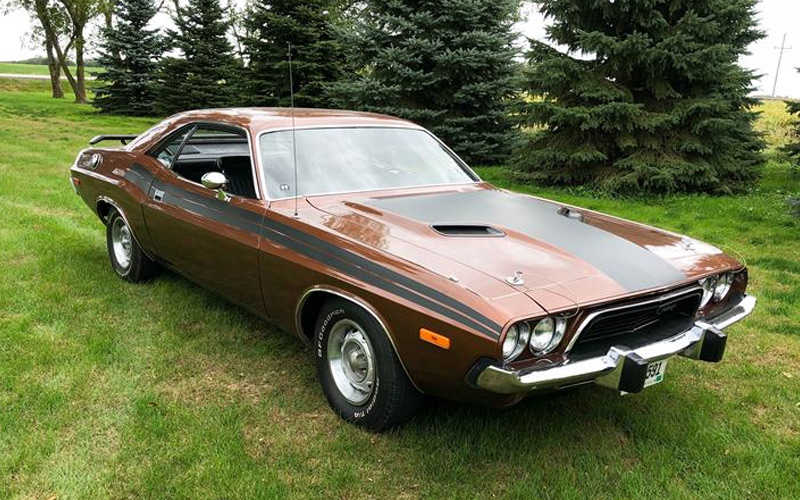
- In 1973, Dodge added 5 mph bumpers with rubber guards to comply with federal safety mandates. The exterior design otherwise remained the same.
- The slant-6 engine was eliminated, leaving only the two V8 engine options.
- In 1974, Dodge replaced the 340 CID V8 with a 360 CID V8 rated at 245 horsepower.
- A federally mandated seatbelt-ignition interlock was also added, preventing the vehicle from starting if the driver or passenger weren’t buckled. The seatbelts were also equipped with inertia reels that lock in the event of a collision.
- Further safety regulations and higher insurance rates for performance cars began to negatively affect the Challenger’s sales.
- Challenger production stopped midway through the 1974 model year.
- A total of 165,437 Dodge Challengers were sold over the course of its first generation.
Second Generation Dodge Challenger (1978 – 1983)
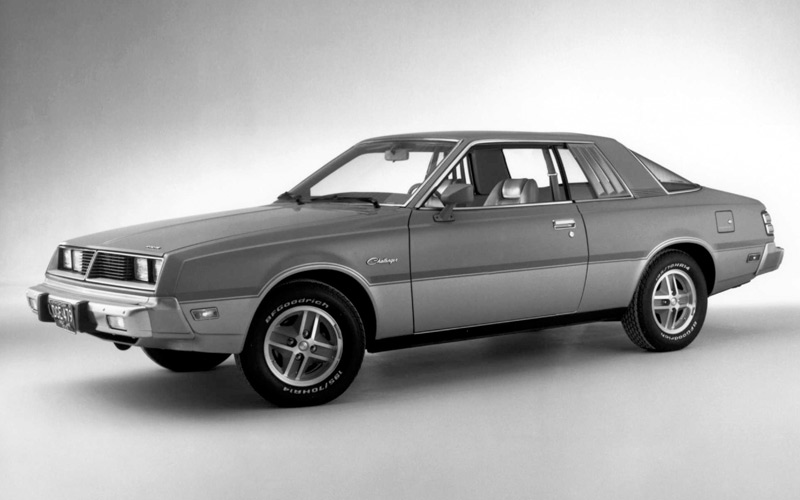
- Dodge reintroduced the Dodge Challenger in 1978.
- The reintroduction was a reaction to the Corporate Average Fuel Economy (CAFE) standards created under the Energy Policy and Conservation Act of 1975. This introduced penalties for automakers who did not meet increasing fuel efficiency standards. By adding a more fuel-efficient vehicle to Dodge’s lineup, it reduced their fleet-wide average fuel economy.
- Dodge, however, didn’t directly manufacture the second-generation Challenger. The 2-door coupe was a rebadged Mitsubishi Galant Lambda.
- It was initially known as the Colt Challenger as the Dodge Colt was previously used for the rebadged Mitsubishi Galant models.
- This Japanese Challenger utilized a boxier exterior, four square headlamps, split front grille, and a notchback roof line. The early models also had a two-tone paintjob and were positioned to look like a performance car (which it wasn’t).
- The standard engine was a 1.6L inline four-cylinder engine that produced 77 hp. A 2.6L inline four-cylinder engine was optional that produced 105 hp.
- The Challenger received a refresh for the 1981 model year that raised the roof, lengthened the wheelbase, and extended the body to provide both more passenger and cargo room. Dodge also dropped the “Colt” branding.
- The 1.6L was dropped in 1981, leaving the 2.6L as the only engine option.
- While the model was generally well received by reviewers, it wasn’t a sales success and was discontinued after the 1983 model year.
Third Generation Dodge Challenger (2008 – 2023)
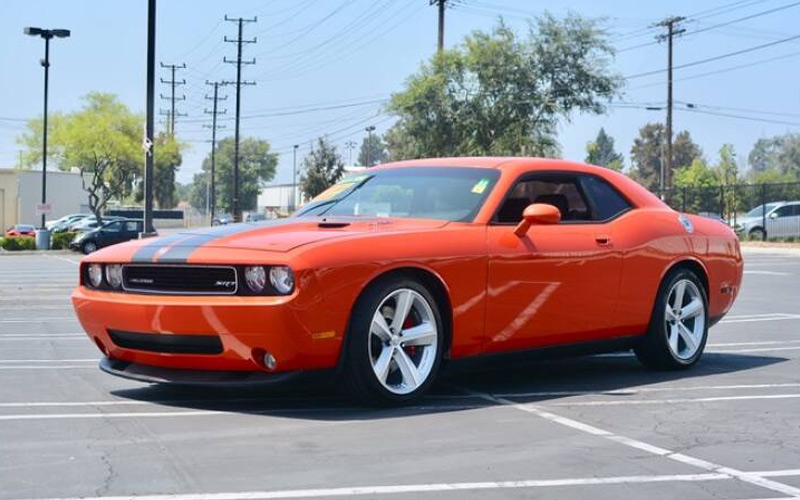
- Chrysler showcased a concept of the Dodge Challenger at the 2006 North American International Auto Show. Fans were so impressed with the concept’s design that the company decided to move it into production for the 2008 model year.
- The third-generation Dodge Challenger took the strong muscle car looks of the 1970 version and brought it into modern day.
- In its debut year, the only version available was the SRT8 model with a 6.1L Hemi V8 engine making 425 hp and 420 lb-ft of torque. Mated to this engine was a 5-speed automatic transmission.
- The year one Challengers each came with numbered dashboard plaques and were only available in three colors – Brilliant Black Cystal Pearl Coat, Bright Silver Metallic, or Hemi Orange.
- These models also featured an early version of the Uconnect infotainment touchscreen system that handled items like navigation, satellite radio, and navigation.
- Dodge opened up the entire lineup for the 2009 model year. Joining the performance oriented SRT8 model was the SE and R/T.
- Challenger SE models received a 3.5L high output V6 mated to a 4-speed automatic transmission, although it was switched to a 5-speed halfway through the model year. The V6 unit put out 250 horsepower and 250 lb-ft of torque.
- Challenger R/T models were powered by a 5.7L Hemi V8. When mated to the 5-speed automatic, the unit was rated at 372 hp and 398 lb-ft of torque. Opting for the 6-speed manual transmission changed output to 375 hp and 404 lb-ft of torque.
- The R/T models with automatic transmissions also featured a Multi-Displacement System that ran the Hemi on four-cylinders rather than all eight when not needed to aid in fuel economy.
- The R/T Classic added some retro flare with its Challenger script badges on the front fenders and R/T signifying side stripes.
- SRT8 models featured the same 6.1L Hemi V8 from 2008, but they could now be optioned with a 6-speed manual transmission.
- SRT8 models also featured standard Brembo brakes, leather seating, sport tuned suspension, 20-inch forged aluminum wheels, and nearly every feature found on the lower trim levels.
- 2009 also introduced the Rallye Package for SE models. This visual package added dual body stripes down the middle of the vehicle, a decklid spoiler, 18-inch aluminum wheels, carbon fiber interior accents, and a chrome fuel door.
- The Drag Race Package was available for SRT8 models for use at NHRA drag races. The package cut 1,000 lbs of weight from the Challenger by removing unnecessary components and through the use of composite materials.
- Dodge made electronic stability control standard on the Challenger in 2010.
- A limited edition Mopar ‘10 Challenger R/T was available that featuring a metallic pearl black body with blue, red, or silver side stripes. It also added a Hurst pistol grip shifter, Mopar cold air intake, Katzkin leather upholstery, and custom badging. Just 600 examples were made with 500 residing in the USA.
- Dodge also celebrated the 40-year anniversary of their “Pink Panther” Challengers with a limited number of SRT8 models that came in Furious Fuchsia paint with white leather upholstery. Each one features numbered badging according to their production number from 1 to 400.
- 2010 also introduced the Super Track Pack which turned the Challenger into to a circuit ready track car. It added items like a larger rear stabilizer bar, anti-lock 4-wheel disc brakes, Sachs Nivomat self-leveling shock absorbers, and more.
- In 2011, the SRT8 gained a 6.4L Hemi V8 referenced as the “392” in reference to its cubic inch displacement. The 392 Hemi made 470 hp and 470 lb-ft of torque.
- Dodge also upgraded the handling of the Challenger this year. The suspension was also outfitted with new dampers and an updated geometry. The 4-wheel disc brakes and steering components were also revised.
- The 3.6L Pentastar V6 took over as the new base engine on SE models. It produces 305 hp and 268 lb-ft of torque.
- In 2012, Dodge Challenger SRT8 392 models received an adaptive suspension system featuring a Sport and Auto mode. The vehicle measures speed, steering, brake, and other metrics to tune the suspension for optimal handling.
- SXT takes over as the name for base models starting in 2012.
- Paddle shifters are introduced on automatic models and a 900-watt Harmon Kardon sound system becomes available.
- 2013 introduces the Rallye Redline Package that adds a single wide stripe down the middle of the car, 20-inch wheels with Redline accenting, Radar Red Nappa leather upholstery, and performance handling upgrades.
- The 2014 Dodge Challenger 100th Anniversary Edition commemorates the introduction of the Dodge brother’s first car back in 1914. It primarily adds commemorative badging throughout the vehicle’s design.

- The 2015 Dodge Challenger underwent a facelift. The front grille follows the design of the 1971 model, adds LED rings around the headlights, the lower grille portion is enlarged and features a sensor for the Forward Collison Warning.
- The rear end also takes on the 1971 model’s split taillights and makes them LEDs. The rear facia has been smoothed out and the rear decklid spoiler is revised to have a cutout in the middle.
- The 5-speed automatic transmission is replaced by an 8-speed ZF 8HP automatic transmission.
- The SRT8 is replaced by the SRT 392 and SRT Hellcat.
- The SRT 392’s 6.4L Hemi V8 now makes 485 hp and 475 lb-ft of torque.
- The SRT Hellcat is now the highest performance Challenger, carrying a 6.2L Hemi V8 that produces 707 hp and 650 lb-ft of torque. The left front inner headlight has been removed in place of a cold-air induction system. It can accelerate from 0 to 60 mph in 3.6 seconds and achieve a quarter-mile time of 11.6 seconds straight from the factory.
- 2017 introduces all-wheel drive on the new Challenger GT. It’s only available paired with the 3.6L Pentastar V6 engine and 8-speed automatic transmission.
- 2017 also saw the return of the Challenger T/A with both the standard 5.7L Hemi or the 392 Hemi. Both versions featured black hood, black decklid, retro T/A side graphics, performance seats wrapped in Houndstooth cloth upholstery, and the cold-air induction through the headlight like the SRT Hellcat.
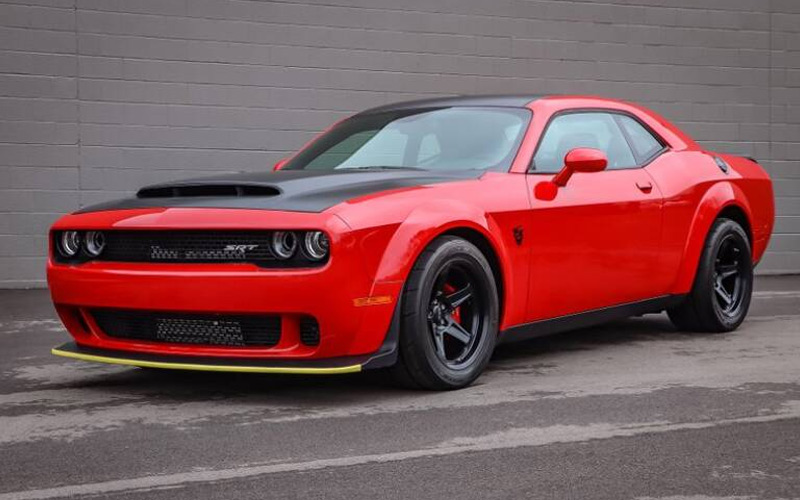
- In 2018, Dodge introduced a new Performance Handling Group Package for SXT and R/T models. It added 4-piston Brembo front brakes, a Bilstein performance suspension, and 20-inch wheels wrapped in performance tires.
- A backup camera is now standard equipment.
- Dodge also unleashed the Challenger SRT Demon on the world for the 2018 model year. This was a limited production version of the SRT Hellcat that added a widebody kit, added a 2.7L supercharger, and cut weight by 216 lbs. The Demon was rated at 840 hp and 770 lb-ft of torque when running on 100 octane fuel.
- Dodge revised the Challenger lineup in 2019. The trim levels now went SXT, GT, R/T, R/T Scat Pack, SRT Hellcat, and SRT Hellcat Redeye.
- The SRT Hellcat rose to 717 hp and added a new dual snorkel hood.
- The SRT Hellcat Redeye was added to the lineup to fill the high-performance void left by the discontinued SRT Demon. The modified SRT Hellcat trim includes a supercharged 6.2L V8 that reaches 797 hp, 8 speed automatic transmission, track ready suspension, SRT Power Chiller and After-Run Chiller.
- The new Scat Pack 1320 package offered a 6.4L Hemi V8 reaching 485 hp, 20” X 9.5” black drag Wheels, drag tires, SRT-tuned drag suspension, and deleted passenger seats all allowing the car to be modified for NHRA competition.
- Dodge also introduced new Widebody packages for the Scat Pack, SRT Hellcat, and the SRT Hellcat Redeye. In addition to the specific trim performance upgrades, the package provided widebody fender flares, 20” X 11” wheels, 305/35ZR20 Pirelli 3-season performance tires, and Bilstein competition suspension.
- In 2020, Dodge celebrated 50 years of the Challenger with the 50th Anniversary Edition which brought back some 70’s nostalgia with the blacked out shaker hood and retro styled interior. Each paint color was limited to 70 examples and was serialized with a commemorative plague.
- 2020 also introduced the SRT Super Stock. It features the same Hemi from the Hellcat Redeye but bumped up to 807 hp. It also added lightweight 18-inch wheels wrapped in drag radials, and a drag tuned suspension with Bilstein adaptive dampers.
- In 2021, the Dodge Challenger SRT Hellcat loses the manual option and is only available with the 8-speed automatic transmission.
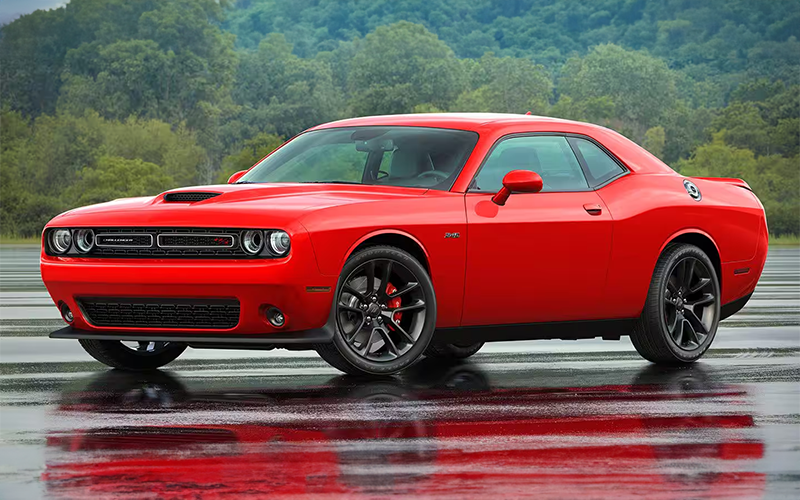
- It’s announced that the 2023 model year is the final version of the Challenger as we know it.
- Dodge paid homage to the Challenger’s legacy with the Last Call special editions. Each features an aluminum plaque displaying where the car was designed and assembled.
- The SRT Demon 170 features the first-ever (and probably last) 1,025-horsepower production Hemi V8. It’s the fastest Challenger ever produced.
- Black Ghost is a callback to a mythical, blacked-out Challenger from street racing lore. The completely black model is an appearance package for the SRT Hellcat Redeye Widebody but adds 10 horsepower to produce 807 horses.
- The Shakedown is based off of a Dodge Product Design Office Concept from back in the day. It adds the iconic shaker hood and a red and black graphic package to R/T Scat Pack models.
- The Swinger is a retro-themed appearance package for the R/T Scat Pack Widebody that references the high-performance Dodge Dart Swinger models from the ‘70s.
- Finally, there’s the Blacktop special edition. This adds a high-performance suspension, the Performance Handling Group option, and blacked-out badges and interior accenting to SXT and GT models.
- Every 2023 Dodge Challenger R/T features a “345” badge on the front fender in place of the “Hemi” badge.
Eighth Generation Dodge Charger Two-Door
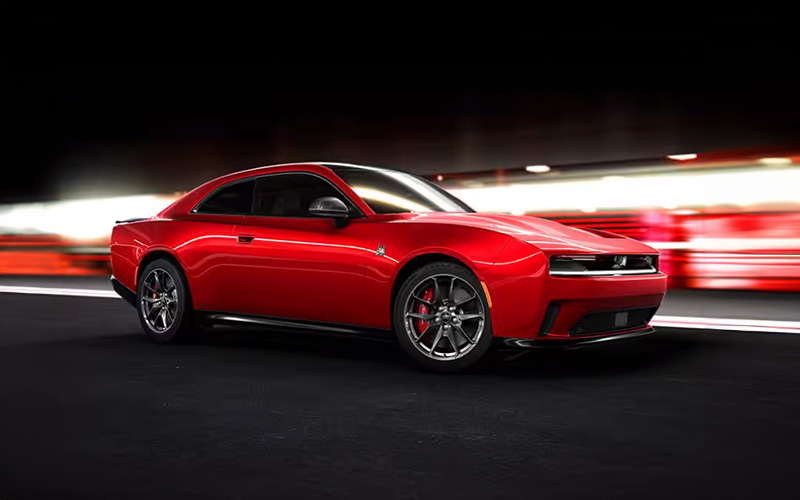
There isn’t a direct successor to the Challenger currently, but the eight generation Dodge Charger two-door looks to fill the void in the meantime. It features a twin-turbocharged inline-6 engine that ranges from 420 hp to 550 hp depending on trim level. Otherwise, there’s the Dodge Charger Daytona version which is a completely electric powered vehicle capable of 670 horsepower. Read more about the Charger Daytona here!
Want your own Challenger? Search Dodge Challengers for sale near you on Carsforsale.com.


